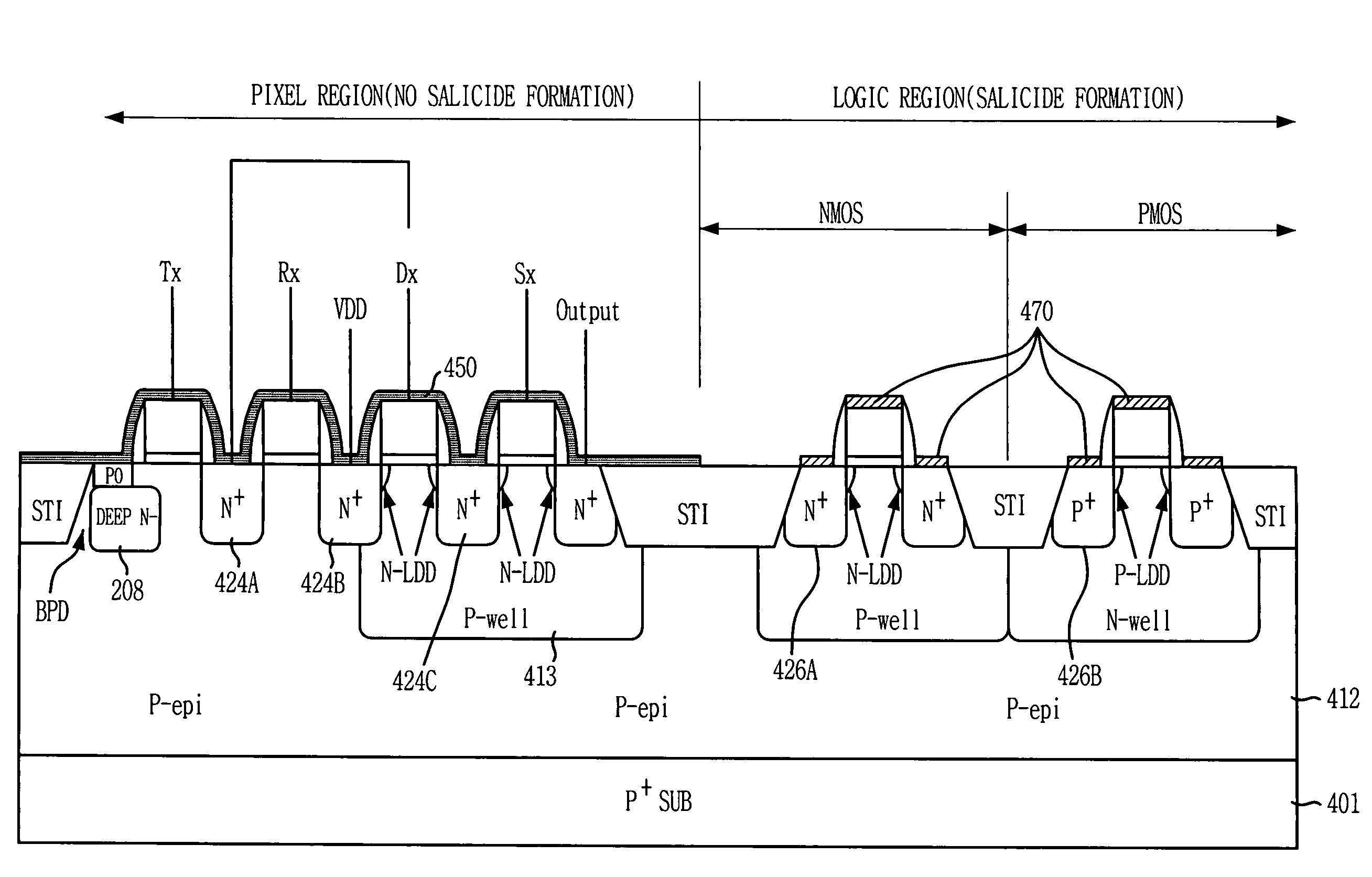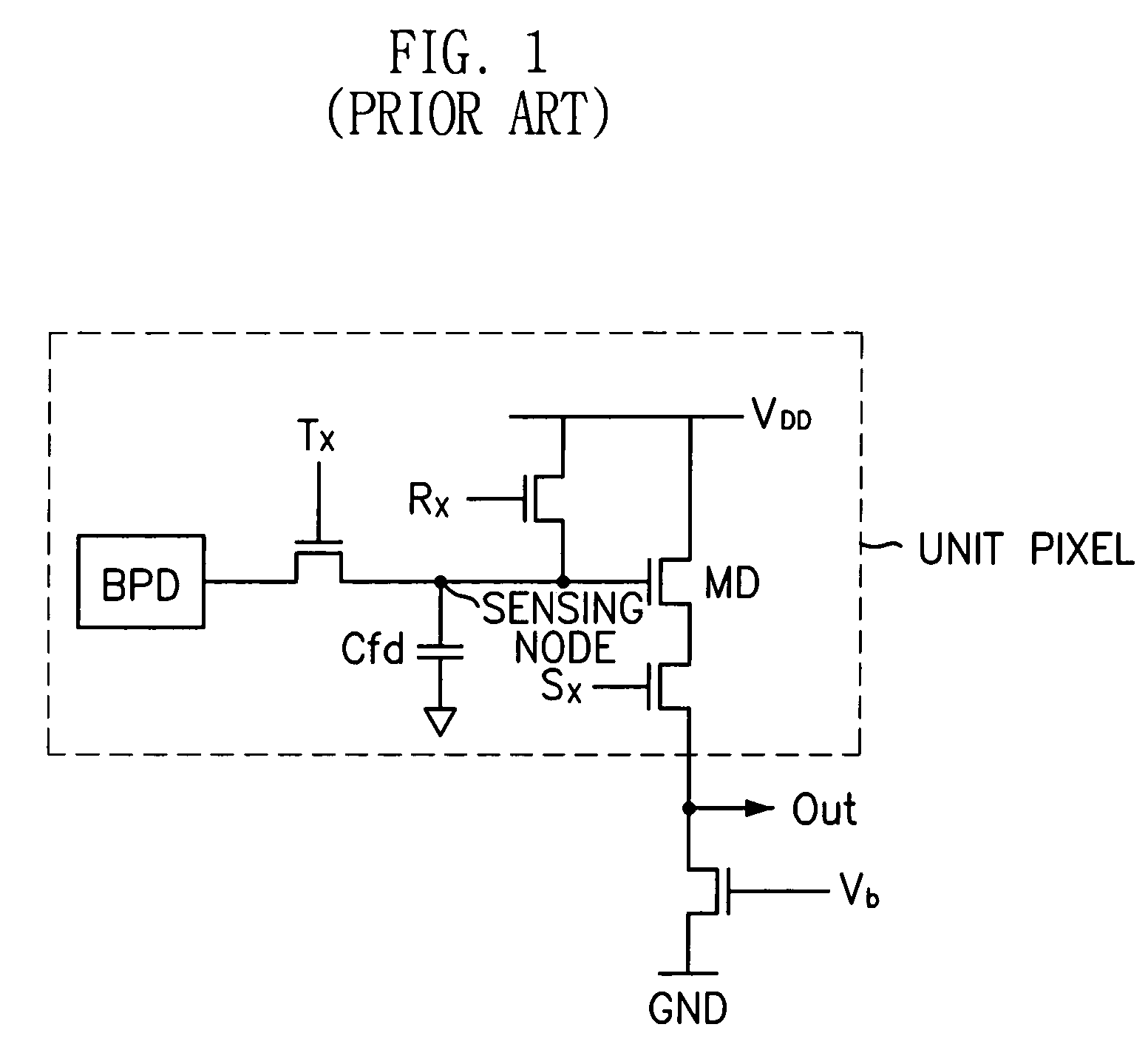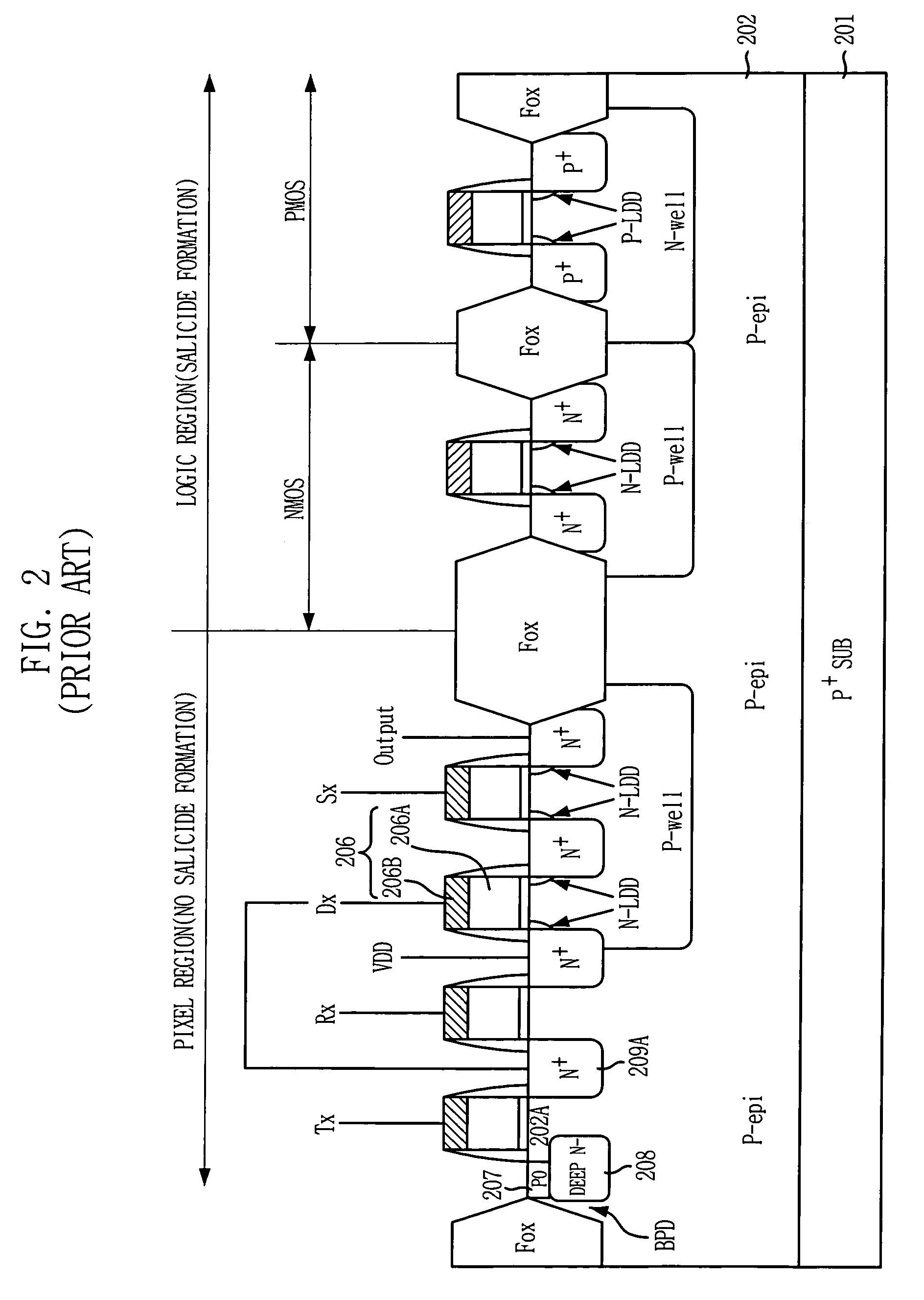Complementary metal-oxide-semiconductor image sensor and method for fabricating the same
a metal-oxide-semiconductor and image sensor technology, applied in the field of complementary metal-oxide-semiconductor (cmos) image sensor, can solve the problems of critical error in the detection of electric signals, display screen whitening in a dark state, and use of polycide gate structure does not provide the intended level of operation speed
- Summary
- Abstract
- Description
- Claims
- Application Information
AI Technical Summary
Benefits of technology
Problems solved by technology
Method used
Image
Examples
first embodiment
[0032]FIG. 4 is a cross-sectional view showing a CMOS image sensor in accordance with the present invention.
[0033]As shown, a salicide blocking layer 450 is formed on an entire pixel region including a buried photodiode BPD, an N+-type floating diffusion region 424A, which is a sensing node, and other devices configuring a unit pixel. In a logic region, a salicide layer 470 is formed on each gate of CMOS devices and highly doped N+-type impurity regions 426A and P+-type impurity diffusion regions 426B both serving as source / drain regions. Herein, the salicide layer is a self-aligned silicide layer.
[0034]If the silicide layer is formed on the source / drain regions in the logic region except for the pixel region, an operation speed of the CMOS image sensor that detects an electric signal corresponding to a photo-generated electric charge through a correlated double sampling mode can be enhanced. Also, being different from the conventional CMOS image sensor, the silicide layer does not ...
second embodiment
[0043]FIG. 5 is a cross-sectional view showing a CMOS image sensor in accordance with the present invention.
[0044]In the CMOS image sensor according to the second embodiment of the present invention, a salicide blocking layer 550 is formed on a buried photodiode (BPD), a gate of a transfer transistor Tx, an N+-type floating diffusion region 524A and a portion of a gate of a reset transistor Rx, while a salicide layer 570 is formed over those devices configuring a unit pixel in a pixel region and over CMOS devices in a logic region. That is, the salicide layer 570 is formed on gates of a driver transistor Dx, a select transistor Sx, an NMOS transistor, a PMOS transistor, an N+-type drain junction 524B, N+-type impurity diffusion regions 524C and N+-type and P+-type impurity diffusion regions 526A and 526B. It should be noted that a CMOS image sensor fabrication method according to the second embodiment is identical to the CMOS image sensor fabrication method described in the first em...
PUM
 Login to View More
Login to View More Abstract
Description
Claims
Application Information
 Login to View More
Login to View More - R&D
- Intellectual Property
- Life Sciences
- Materials
- Tech Scout
- Unparalleled Data Quality
- Higher Quality Content
- 60% Fewer Hallucinations
Browse by: Latest US Patents, China's latest patents, Technical Efficacy Thesaurus, Application Domain, Technology Topic, Popular Technical Reports.
© 2025 PatSnap. All rights reserved.Legal|Privacy policy|Modern Slavery Act Transparency Statement|Sitemap|About US| Contact US: help@patsnap.com



